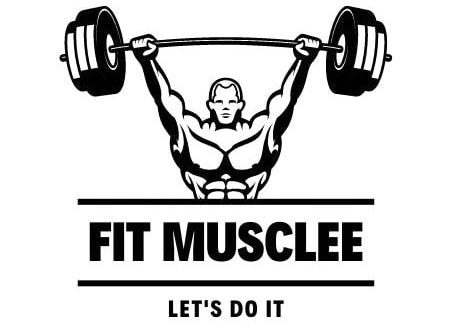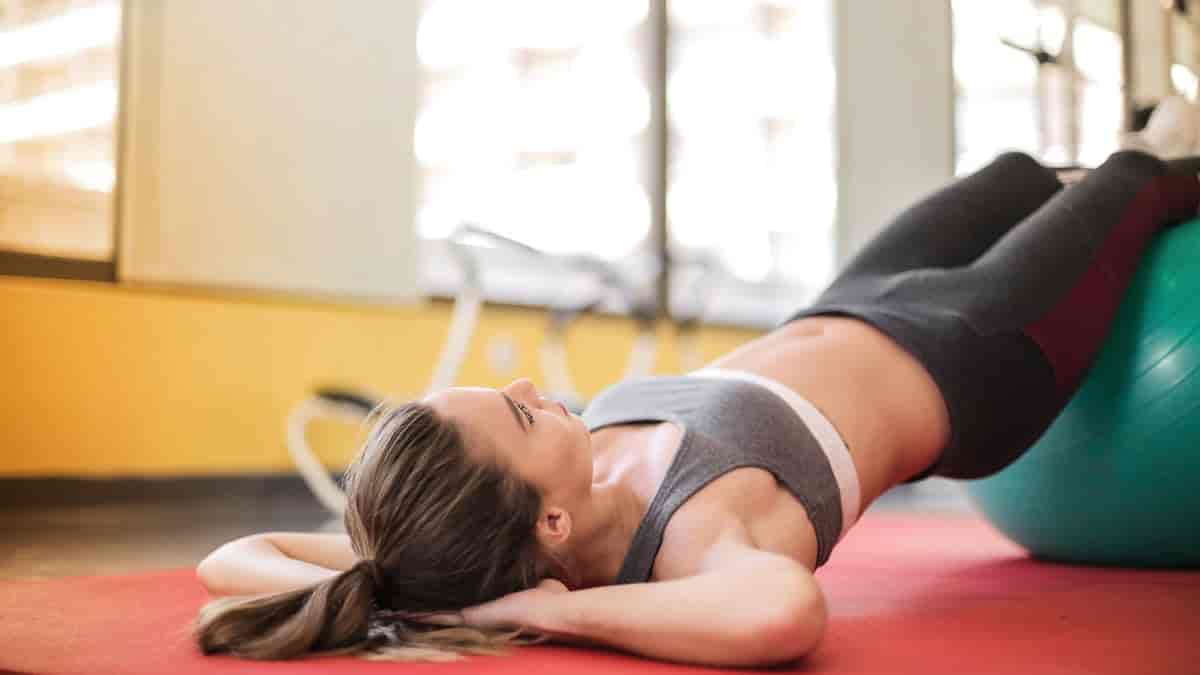Here is your complete guide to alternatives to hip thrusts.
Introduction to Alternatives to Hip Thrusts
Hip thrusts have gained immense popularity in the fitness community as a go-to exercise for building glute strength and enhancing athletic performance. However, while hip thrusts are effective, they may not be suitable for everyone. This article explores various alternatives to hip thrusts that can help you achieve your fitness goals while providing variety to your workout routine.
Exploring alternatives to hip thrusts is essential for several reasons:
- Injury Prevention: Overuse injuries can occur when performing the same exercise repeatedly.
- Muscle Activation: Different exercises can engage muscles in unique ways, promoting balanced development.
- Accessibility: Some alternatives may require less equipment or be more comfortable for certain individuals.
In this guide, we will delve into the top alternatives to hip thrusts, their benefits, and how to incorporate them into your workout routine effectively.
Understanding Hip Thrusts
Hip thrusts are a strength training exercise primarily aimed at targeting the gluteus maximus, hamstrings, and core muscles. The exercise involves lying on your back with your shoulders on a bench and your feet flat on the ground, then lifting your hips towards the ceiling by engaging your glutes.
Muscles Worked
Hip thrusts predominantly work the following muscle groups:
- Gluteus Maximus: The primary muscle targeted during hip thrusts.
- Hamstrings: Assist in hip extension during the movement.
- Core Muscles: Engaged to stabilize the body throughout the exercise.
Benefits of Hip Thrusts
Incorporating hip thrusts into your workout routine offers several advantages:
- Increased Glute Strength: Helps in building stronger glutes, which can enhance athletic performance.
- Improved Posture: Strengthening the glutes can contribute to better posture and spinal alignment.
- Enhanced Athletic Performance: Stronger glutes can improve power and speed in activities like running and jumping.
Common Mistakes
While hip thrusts are effective, they can be performed incorrectly. Here are some common mistakes to avoid:
- Arching the Back: This can lead to lower back strain; focus on keeping a neutral spine.
- Not Engaging the Core: Failing to engage your core can compromise stability.
- Using Too Much Weight: Start with a manageable weight to ensure proper form before progressing.
Why Consider Alternatives to Hip Thrusts?
Injury Prevention
Performing a variety of exercises helps prevent overuse injuries that can result from repetitive movements. By incorporating alternatives to hip thrusts, you can target similar muscle groups without placing excessive strain on any single area.
Muscle Activation
Different exercises activate muscles in unique ways. This variation can lead to improved overall muscle development and prevent plateaus in strength gains. For example, some alternatives may emphasize different aspects of glute activation or engage stabilizing muscles more effectively.
Accessibility
Not everyone has access to a gym or specific equipment needed for hip thrusts. Exploring alternatives to hip thrusts allows individuals to find exercises that fit their environment and personal preferences.
Top Alternatives to Hip Thrusts
Here’s a detailed look at some of the best alternatives to hip thrusts, including their benefits and how they target similar muscle groups.
| Exercise | Description | Muscles Worked | Benefits |
|---|---|---|---|
| Barbell Back Squat | A compound exercise performed with a barbell across the upper back. | Glutes, quads, hamstrings | Builds overall leg strength and power. |
| Glute Bridge | A simpler version of the hip thrust performed on the ground. | Glutes, hamstrings | Great for beginners; low impact and easy. |
| Cable Pull-Through | Uses a cable machine for targeting the posterior chain. | Glutes, hamstrings | Emphasizes hip extension effectively. |
| Bulgarian Split Squat | A single-leg squat variation that enhances balance and strength. | Glutes, quads, hamstrings | Improves unilateral strength and stability. |
| Kettlebell Swing | A dynamic movement that targets glutes and core through swinging motion. | Glutes, hamstrings, core | Boosts cardiovascular fitness while building strength. |
| Step-Up | A functional movement mimicking everyday activities using a bench or box. | Glutes, quads, hamstrings | Enhances stability and coordination. |
| Reverse Hyperextension | A machine-based exercise focusing on glute activation while lying face down. | Glutes, lower back | Reduces lower back strain while strengthening glutes. |
| Single-Leg Deadlift | A balance-focused exercise that targets glutes and hamstrings effectively. | Glutes, hamstrings, core | Improves balance and unilateral strength. |
| Sumo Deadlift | A deadlift variation emphasizing inner thighs and glutes with a wide stance. | Glutes, hamstrings, quads | Builds overall lower body strength efficiently. |
| Machine Hip Thrust | A machine-assisted version of the hip thrust for controlled movement. | Glutes, hamstrings | Provides stability for beginners or those with injuries. |
Detailed Exercise Breakdown: Alternatives to Hip Thrusts
1. Barbell Back Squat
The barbell back squat is one of the most effective lower body exercises available.
- How To Perform:
- Stand with feet shoulder-width apart.
- Place a barbell across your upper back.
- Lower your body by bending at the knees while keeping your chest up.
- Push through your heels to return to standing.
2. Glute Bridge
The glute bridge is an excellent alternative that requires no equipment.
- How To Perform:
- Lie on your back with knees bent and feet flat on the floor.
- Lift your hips towards the ceiling by squeezing your glutes.
- Hold at the top for a moment before lowering back down.
3. Cable Pull-Through
This exercise utilizes a cable machine to target the posterior chain effectively.
- How To Perform:
- Stand facing away from a cable machine with a rope attachment at the lowest setting.
- Grab the rope between your legs and step forward until you feel tension.
- Hinge at your hips to pull the weight through while keeping your back straight.
4. Bulgarian Split Squat
This single-leg squat variation is excellent for building unilateral strength.
- How To Perform:
- Stand a few feet in front of a bench or box.
- Place one foot behind you on the bench.
- Lower into a squat on your standing leg while keeping your chest upright.
5. Kettlebell Swing
A dynamic movement that combines strength training with cardiovascular conditioning.
- How To Perform:
- Stand with feet shoulder-width apart holding a kettlebell between your legs.
- Hinge at your hips and swing the kettlebell forward using momentum from your hips.
- Control the swing back down between your legs as you prepare for another rep.
6. Step-Up
This functional movement mimics daily activities like climbing stairs.
- How To Perform:
- Stand in front of a sturdy bench or box.
- Step up with one foot, pressing through your heel as you lift yourself up.
- Step back down and repeat on the other leg.
7. Reverse Hyperextension
This exercise targets both glutes and lower back without strain.
- How To Perform:
- Lie face down on a reverse hyperextension machine.
- Lift both legs behind you by squeezing your glutes.
- Lower them slowly back down without touching the ground.
8. Single-Leg Deadlift
This balance-focused exercise is great for improving coordination while targeting key muscles.
- How To Perform:
- Stand on one leg holding a dumbbell in the opposite hand.
- Hinge at your hips while extending the free leg behind you until parallel to the ground.
- Return to standing position by engaging your standing leg’s glute.
9. Sumo Deadlift
The sumo deadlift variation emphasizes inner thigh engagement along with glute activation.
- How To Perform:
- Stand with feet wider than shoulder-width apart with toes pointed outwards.
- Grip the barbell with both hands inside your legs.
- Push through your heels as you lift the barbell by extending through hips and knees.
10. Machine Hip Thrust
For those who prefer stability during their workouts, this machine-assisted version is ideal.
- How To Perform:
- Sit on a hip thrust machine with shoulders against padding.
- Position feet flat on footplate or ground before lifting hips upward by squeezing glutes.
How to Incorporate Alternatives to Hip Thrusts into Your Routine
Incorporating alternatives to hip thrusts into your workout routine can be straightforward if you follow these guidelines:
Workout Structure
- Warm-Up: Always start with dynamic stretches focusing on lower body mobility (e.g., leg swings).
- Exercise Selection: Choose two or three alternatives from our list based on personal preference or equipment availability.
- Sets and Reps: Aim for three sets of each exercise with reps ranging from eight to twelve depending on fitness goals (higher reps for endurance; lower reps for strength).
- Rest Periods: Allow rest periods of about one minute between sets to recover adequately without losing intensity.
Progressions and Modifications
To ensure continuous improvement:
- Start with bodyweight variations if you’re new to these exercises before adding weights progressively.
- Modify exercises based on comfort levels; for instance:
- Use lighter weights or resistance bands if you’re unsure about form or struggling with heavier loads.
- Adjust range of motion if flexibility is an issue (e.g., decreasing depth in squats).
Read Also: Alternatives to Preacher Curls.
FAQs about Alternatives to Hip Thrusts
What are the best alternatives to hip thrusts?
The best alternatives include barbell back squats, glute bridges, cable pull-throughs, Bulgarian split squats, kettlebell swings, step-ups, reverse hyperextensions, single-leg deadlifts, sumo deadlifts, and machine hip thrusts—each targeting similar muscle groups effectively.
Read Also: Alternative to Leg Press.
Can I replace hip thrusts with these alternatives completely?
Yes! While hip thrusts are effective for building glute strength specifically, these alternatives can provide similar benefits when performed correctly within an overall balanced workout program focusing on lower body strength development.
Read Also: Zercher Squat vs Back Squat.
How do I know which alternative is best for me?
Choosing an alternative depends on personal preferences regarding comfort level (some may prefer machines over free weights), available equipment (home vs gym), specific fitness goals (strength vs endurance), or any existing injuries that might limit certain movements.
Read Also: Reverse Hack Squat Alternative.
Are there any risks associated with these alternatives?
As with any exercise program, there are risks involved if proper form isn’t maintained or if excessive weight is used too soon—leading potentially leading strains or injuries over time! Always prioritize technique over load progression when starting new movements!
Read Also: Single Leg Press Alternative.
Conclusion
In summary, exploring alternatives to hip thrusts not only enhances muscle development but also adds variety and reduces injury risk in workout routines! By incorporating exercises like barbell squats or kettlebell swings alongside traditional movements like bridges—individuals can achieve well-rounded lower-body training results tailored specifically towards their needs!
Read Also: Foods That Increases Hemoglobin.
Remember that consistency is key; so don’t hesitate—try out these alternatives today! Share your experiences below—what’s been working best? Let’s keep each other motivated as we strive towards our fitness goals together!
Read Also: High to Low Cable Flyes Alternative.
References and Resources Used in This Article:
- Glutes hypertrophy: Hip thrust or parallel squat? – Sci-Sport.com
- How to activate the glutes best? Peak muscle activity of acceleration-specific exercises – Springer
- Lower Body Alternatives to Your Favorite Gym Machines (Plus Free Workout!) – Muscle and Strength
- Gluteus Maximus Activation during Common Strength and Hypertrophy Exercises – PMC
- Stop Doing These Leg Exercises. Do These Moves Instead. – Men’s Health
- 7 Barbell Hip Thrust Alternatives to Train Your Glutes – Plain Perky
- Best Glute Exercises to Get A Well Rounded Butt – Built With Science
- 7 Strength Training Exercises For Your Strongest Lower Body Ever – Peloton
- The 11 Best Glute Exercises Backed By Science – Fitbod
- A Comparison Between the Squat and the Deadlift for Lower Body Strength – PMC

